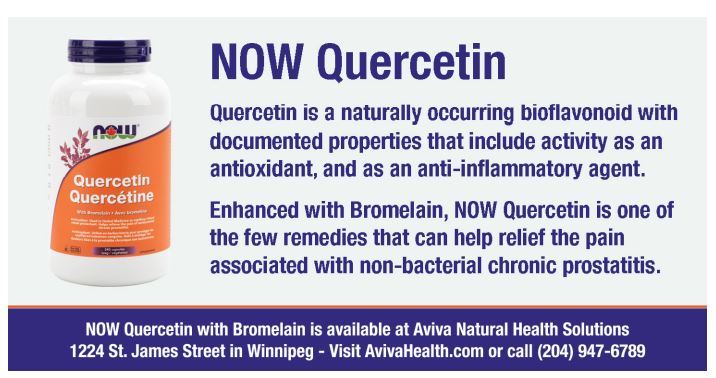
Nathan Zassman
Natural Health Solutions
Affecting almost 1 in 4 Canadian adults, hypertension (the medical term for high blood pressure) is a major risk factor for cardiovascular disease, heart attack, and stroke.
It affects about 1 billion people worldwide and results in over 7 million deaths per year. In the USA, every 37 seconds someone dies of cardiovascular disease and about 700,000 people have a stroke each year (with over 400 deaths each day). Fortunately, many cases of cardiovascular disease are preventable, and there are dietary and lifestyle changes we can implement that can help resolve this common condition naturally.
The traditional medical approach to reducing blood pressure is to recommend lifestyle modifications including exercise, weight loss (if required), healthier food choices like the DASH diet (Dietary Approaches to Stop Hypertension), restricting salt intake, and prescribing a suite of drugs, which may include ACE inhibitors, beta-blockers, calcium channel blockers, and diuretics — sometimes called the ABCDs. Unfortunately, these drugs can produce adverse effects including insomnia,headaches, impotence, kidney failure, weight gain, joint disorders, diarrhea, weakness, and low energy among many others. Because of these serious and disruptive side effects, many patients don’t take these drugs as prescribed.
A blood pressure reading is given in millimeters of mercury (mm Hg), with two numbers. The upper number indicates the arterial pressure when the heart beats (the systolic phase); and the lower number when the heart is at rest, between beats (the diastolic phase, when the heart fills with blood and absorbs oxygen). A good, healthy blood pressure reading is below 120/80 mm Hg. Ideally, the diastolic blood pressure reading should be lower than 80; a reading between 80 and 89 is often considered normal, but it’s not optimal, and an elevated diastolic level can lead to a higher systolic level.
I received a call from a woman who was seeking a natural approach to help lower her blood pressure. Jane (not her real name) is 55 and had until recently been in perfect health all her life. But in the previous two weeks, she had been hospitalized twice for a very rapid pulse and had a systolic blood pressure reading of 196. While in the hospital she had a chest X-ray and a thorough checkup, including blood work. Other than an elevated diastolic blood pressure reading over 90, everything seemed normal. The medical term for this condition is “isolated diastolic hypertension.”
The holistic approach to any health concern starts with trying to find the cause, rather than dealing with the symptoms. I learned that Jane leads a very healthy lifestyle. She’s active, doesn’t smoke or drink, isn’t overweight, and drinks about four cups of coffee per week. Her diet is focused on plant foods and lean meats and is better than most of the clients that come to see me. She also has a lovely, warm, engaging personality, and made it clear that she was eager to try my approach.
The largest organ in the body, the endothelium is the lining of our arteries and blood vessels; it plays a critical role in regulating blood pressure and preventing cardiovascular disease. Poor endothelial function is associated with plaque buildup and reduced blood flow to our organs, cells, and tissues. Nitric Oxide (NO) is a gas produced by the endothelium, and is the most important molecule for reducing blood pressure and increasing blood flow. During our meeting, we discussed the importance of boosting nitric oxide levels, which decrease after the age of 40. The key factor in improving endothelial function is aerobic exercise, however increasing the amount of foods high in nitrates is also important, as they’re converted to nitric oxide in the body.
I recommended Jane take Neo40, a supplement clinically proven to increase nitric oxide production, along with a concentrated super green juice powder that includes probiotics, mushroom extracts, micro-algae, vegetables, and fruits. I also suggested a powdered blend of different types of magnesium (Magnesium Synergy) which also contains zinc and potassium (critical for maintaining healthy blood pressure). I recommended she take aged garlic capsules, beet juice, curcumin, olive leaf complex, black seed oil, omega-3, a comprehensive multivitamin, and two strong cups of hibiscus tea per day. Two published studies found that hibiscus tea and olive leaf extract were as effective as the commonly-prescribed ACE inhibitor drug captopril.

As my approach is to provide solid research to support my recommendations, I gave Jane a selection of well-referenced studies on a variety of complementary dietary supplements including Pycnogenol, coenzyme Q10, black seed oil, olive leaf extract, and grape seed extract. I also recommended using sesame oil as her primary oil for cooking. Sesame oil contains sesamin, sesamol, and vitamin E, compounds confirmed in studies to help lower blood pressure.
I stressed the importance of fasting for two non-consecutive days each week and suggested that she spend quiet time meditating each day, as mindfulness meditation has been shown to help reduce blood pressure. I also gave her a four-minute aerobic exercise routine to do three times a day specifically designed to help the body increase nitric oxide levels.
A few days later, Jane emailed me to update me on her “exciting progress.” She had implemented many of my recommendations and was eating lots of healthy salads, seeds, bananas, and papayas, and was keeping an accurate log of her readings. Before she embarked on my program, her blood pressure was 155/88 (as measured by her doctor). That dropped to 132/80 during her next visit less than two weeks later. She suspects that this doctor’s reading may have been elevated due to “white coat syndrome,” as the reading she took at home was a healthy 121/67. A half an hour after drinking some fenugreek tea with some ground ginger, she found her next reading to be a remarkable 105/71 with a 72 pulse. Jane is now sleeping better, and her self-measured diastolic readings are consistently under 80, while her systolic readings are usually under 120.
Normally, I tell clients that they shouldn’t expect rapid results when using natural approaches that include diet, supplementation, and exercise. I’ve found it can often take up to three months for people to see significant changes. But it’s also not uncommon to see quick improvements, particularly for relatively healthy people like Jane who are committed and dedicated to pursuing optimum health.
One of the best reasons to continually work on living a healthy lifestyle is that it can make performing the activities of daily life easier, providing us with more time to do the things we love. Making lifestyle changes requires more of a commitment than taking pharmaceutical drugs, but the health benefits can be amazing, especially when you consider the potential adverse effects of drugs. Making healthier food choices, taking supplements, fasting, meditating, and getting more exercise can not only help manage blood pressure, but bring a host of other benefits like increased energy, better sleep, and a longer life.
Nathan Zassman is the owner and president of Aviva Natural Health Solutions.

